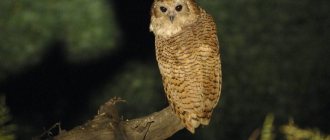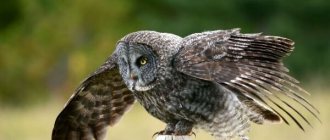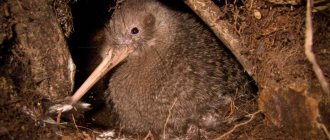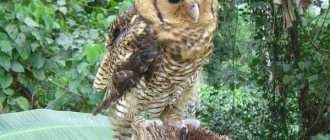- Wild animals
- >>
- Birds
The short-eared owl is a bird of prey belonging to the order Owls. From time immemorial, the owl was considered a symbol of wisdom and secret knowledge. She is often depicted as an indispensable companion of the Slavic Magi or the animal god Veles. Today, the short-eared owl is one of the most common birds of prey on the territory of the Eurasian continent, and its habitat is truly colossal.
Origin of the species and description
Photo: Short-eared owl
The classification of the short-eared owl as a species occurred in the mid-18th century. These birds were identified as a separate species by the famous Swedish biologist Karl Liney. But without any doubt, as a species, the short-eared owl formed several thousand years ago.
There is an opinion that this winged predator lived in Eurasia even before the end of the Ice Age. And unlike many other bird species, short-eared owls were able to adapt to a changing climate and survived all natural disasters well. The oldest remains of an owl date back to the 3rd millennium BC and were found in France during archaeological excavations.
Interesting fact: Short-eared owls occupy an important place in the mythology of various nationalities. Among the Slavs it is a symbol of wisdom and knowledge, and in Asian countries it is a symbol of imminent death, an indispensable companion of a demon who takes souls.
Video: Short-eared owl
In terms of wingspan and weight, short-eared owls are considered medium-sized birds, but this does not make them any less dangerous predators.
These birds are distinguished by the following key features:
- body length, no more than 45 centimeters;
- wingspan - about 1 meter;
- body weight, no more than 500 grams;
- the head is large and round with pronounced yellow (or light orange) eyes;
- the beak is strong and powerful, predatorily curved down.
The bird's plumage is light brown. The feathers are soft, tightly adjacent to each other. Some subspecies of short-eared owls have down, which helps them not freeze even in the most severe frosts. The plumage below is somewhat lighter than on the back, which is clearly visible when the bird is flying. Interesting features of the bird include the fact that male short-eared owls are smaller than females, but do not differ at all from each other in the color of their plumage.
Interesting Facts
The short-eared owl flies from place to place, in search of a better life. Her feathers are darker and her head is larger than that of a barn owl. According to ornithologists, ears additionally serve for camouflage. By facial expressions you can determine the mood, understand what exactly the individual wants.
If the feathers on the ears are in a relaxed horizontal position, wariness is not detected - the owl is not afraid of anything. When she is alert, she raises the feathers on her ears by 45 degrees. Under favorable conditions, the owl may refuse to migrate.
In this case, mating can occur in winter. Ornithologists cite difficulties in counting species in the region. They record the sounds (calls) of owls on a voice recorder and record the number of people who responded to the played recording, changing the location of the study.
The sounds made by an owl are similar to hoots. It does not live in areas of too hot climates, but settles on coasts and wetlands. The owl has an interesting paw structure. Sharp tenacious claws allow you not to miss the victim and defend yourself from opponents. The mobility of the individual, the peculiarities of vision and hearing determine the residence in territories with different climates.
Appearance and features
Photo: What a short-eared owl looks like
The owl family is one of the most numerous winged predators in the world. This is due to the fact that owls live in almost all climatic zones and have adapted to life in various natural conditions. The appearance and behavioral characteristics of a bird depend on which subspecies it belongs to.
Currently, several subspecies of short-eared owls are distinguished:
The great gray owl is one of the largest birds of this species. There are individuals reaching a meter in size with a wingspan of one and a half meters. You can recognize a tawny owl not only by its large size, but also by the black circles around its eyes. There is also a large black spot under the beak. It resembles a beard and hence the name of this bird. An interesting feature of the great gray owl is that it does not build its own nests, preferring to occupy the ready-made nests of other birds. The bird lives in the Russian Federation, as well as in the Far East, in countries such as Mongolia and China;
The great owl is the smallest member of the owl family. The size of an adult does not exceed 20 centimeters, and the wingspan does not exceed 40 centimeters. It resembles a pigeon in size, but is an active predator and perfectly hunts the same pigeons. The plumage of the sparrow owl is gray-brown, the head is small, the eyes opposite are large and widely spaced. The peculiarity of the bird is that it is covered with thick feathers right down to its claws.
The snowy owl is perhaps the most unusual representative of the owl family. It is distinguished not only by its large size (up to 50 centimeters in length and up to 2 kilograms of weight), but also by its excellent camouflage. The bird's plumage is white, with a small black dot. This allows it to perfectly camouflage itself in tundra and permafrost conditions. The birds and I are able to survive even in extremely low temperatures, and feel great even on the islands of the Arctic Ocean.
The hawk owl is the most dangerous predator of the family. The bird got its name due to the fact that the color of its plumage (brown-brown) is similar to the color of the plumage of a hawk. The bird lives in forested areas of Europe, Kamchatka, North America and even Chukotka. Its main prey are black grouse, hazel grouse, hares and squirrels.
Natural habitats
Each species chooses its own habitat, based on the living conditions to which it is accustomed. Owls are found in almost every corner of the globe: in Europe, Africa, Asia, America.
African long-eared owl
Sparrow owls can be found almost everywhere, but this species is not present in Australia.
North and South America are characterized by the presence of owls of the genus “Megascops”, unusual “Fish owls” are common on the Asian continent, “Neotropical owls” have chosen numerous forests in the Central America region as their main habitat. “Striped cutworms” are found primarily in Jamaica, which is how they got their second name, “Jamaican cutworm.”
Far Eastern fish owl
Thus, it will not be difficult to meet representatives of these predators in different places. They are distributed almost everywhere, however, some varieties of owls settle exclusively in a certain territory, without going beyond its borders.
Elena
Ask a Question
Question to the expert
Why do owls fly to cities in large numbers?
Owls can usually be found in cities in winter. Their presence is explained by the fact that in their usual habitats, forests, there is too much snow cover (about a meter), which prevents the owls from obtaining food in the form of small mammals. Because of this, forest species are looking for new places where food will be more available. Usually these are steppes, meadows, fields, but maybe a city. Here, predators catch mice and rats near landfills and garbage containers. They can also hunt pigeons, sparrows and other urban birds. Owls are usually nocturnal, and when in the city, they prefer to stay on tree branches. Because of this, it may seem as if the owl has “lost its way.” However, she knows perfectly well what she is doing and does not need human participation.
Where does the short-eared owl live?
Photo: Short-eared owl in Russia
The short-eared owl is an unpretentious bird with a high ability to adapt. Therefore, it is not surprising that the winged predator lives throughout the globe with the exception of Antarctica and Australia.
Interesting fact: The high adaptive abilities of the owl are evidenced by the fact that it is able to survive even on snow-covered islands in the Arctic Ocean in conditions of permafrost and constant negative temperatures.
Short-eared owls happily live throughout Eurasia from Portugal and Spain to the Trans-Baikal and Mongolian steppes. The optimal place for an owl to live is the tundra, steppe or large wastelands with low vegetation. If necessary, birds are able to live on the outskirts of the forest, but will never settle in a dense forest.
As for Latin American countries or southern states with constant high air temperatures, birds prefer to settle in the floodplains of large rivers, in swampy areas or on the sea coast. The short-eared owl thrives equally well in the swamps of Louisiana and the highlands of the Andes at an altitude of 3000 meters.
In the northern regions, birds migrate to warmer areas, and in hot countries, owls lead a sedentary lifestyle and spend their entire lives in one territory. Birds are not afraid of people and quite often settle near large agricultural lands, fields or human homes.
Now you know where the short-eared owl lives. Let's see what she eats.
How do they sleep
In nature, owls sleep in hollows or in secluded places among tree branches, clinging to them with their talons. Poultry lies on the bottom of the cage or on the bedding with its belly down and legs extended.
What does a short-eared owl eat?
Photo: Short-eared owl in nature
Most often, these birds of prey hunt small rodents. Voles, wood mice and rats are the main diet for the short-eared owl. When there is a shortage of rodents, owls are able to catch snakes, frogs, large flying insects and even fish (this usually happens in coastal areas or near large rivers). Large individuals are capable of hunting hares and catching cubs of foxes and wolves.
Interesting fact: The standard region for short-eared owls is 60-80 grams of meat. This is 2-3 vole mice. But when it gets colder or when feeding its chicks, the short-eared owl is capable of catching 10-12 voles a day, which is quite comparable to its own weight.
The short-eared owl is one of the few birds that can store supplies for a rainy day. When the bird is completely full, it regurgitates undigested food near the nest. Usually, this is 6-8 semi-digested voles. Such reserves help the bird survive a hungry spring or survive the winter in case of severe frosts.
The short-eared owl's hunting method is very interesting. The bird hunts with equal success both while sitting on a hill and in low-level flight at an altitude of up to 10 meters from ground level. At the same time, while hunting, the short-eared owl relies not only on excellent vision, but also on sensitive hearing, which allows it to detect mice even underground.
Dimensions
The body length and weight of adults of some varieties of owls are presented below.
| View | Body length, cm | Weight, kg | Wingspan, cm |
| Great Gray Owl | 80 | 2,6 | 160 |
| Common eagle owl | 75 | 3,2 | 190 |
| Barred Fish Owl | 63 | 1,7 | 150 |
| Spectacled neotropical owl | 52 | 1,25 | 130 |
| Spotted Owl | 43 | 0,6 | 115 |
| Long eared owl | 37 | 0,25 | 95 |
| Scops Owl | 20 | 0,13 | 50 |
| Eastern armyworm | 18 | 0,1 | 48 |
Features of character and lifestyle
Photo: Short-eared owl in flight
The short-eared owl spends most of its life alone. Only during the breeding season (several months a year) do males and females live in close proximity to each other. Each short-eared owl has its own territory. It is smaller than that of large birds of prey, but its area is quite enough to feed the bird throughout the year.
The peak of vital activity appears in the short-eared owl at sunset, at dusk and at night. The owl goes hunting and devotes several hours to catching various small animals. By midnight, the bird's activity dies down, and it goes to the nest. However, do not think that an owl cannot hunt in daylight. If necessary (when it is necessary to feed the chicks or there is not enough prey at night), the owl can hunt in the morning or evening. The bird prefers to spend only the hottest hours in the nest.
If an owl lives near large bodies of water and has to compete with gulls and skuas, it completely switches to a nocturnal lifestyle, since other birds sleep at night. The short-eared owl's way of resting is very interesting. In order for the wings to relax, the owl sits on a branch in a strictly vertical position or lies flat on the ground with its wings stretched out. Thanks to the camouflage plumage, the bird is very difficult to spot, and you can walk a few meters from the owl without noticing it.
In addition, short-eared owls love to sunbathe. To do this, they sit facing the sun and lower their wings down as much as possible. Migrating owls (especially those that live beyond the Arctic Circle) gather in flocks of 50-80 individuals and cover a distance of 2-3 thousand kilometers to their permanent wintering grounds.
Nutrition
Birds choose places of permanent residence based on safety considerations and the availability of food. The short-eared owl feeds on small rodents, insects, birds and snakes. She hunts at dusk, less often during the day. Thanks to its color, the bird is invisible and blends in with the trees, grass and ground.
She tenaciously clasps the branch with her claws, masquerading as the surrounding background. On the ground, the bird is practically invisible, so it often becomes a victim when plowing fields. The speed of silent flight is low, but the accuracy of determining the coordinates of the victim allows it to provide food for itself and its offspring.
She swallows food whole or tears it into pieces. Later, it regurgitates compressed lumps of wool, bones and feathers. Ornithologists go around the habitats and collect lumps, find out the diet. Low intelligence is compensated by well-developed natural instincts.
Social structure and reproduction
Photo: Short-eared owl in Belarus
As mentioned above, single owls and pairs gather together only for the breeding season. The mating season for owls begins at the end of March and ends at the beginning of June, it all depends on the climatic conditions in which the bird lives. Monogamous couples form in the spring, but after the season the couples break up and the chances of them reuniting again are low.
To attract a female, males show the inside of their wings and fly in a spiral, demonstrating their capabilities. The female is necessarily presented with a gift in the form of caught game, and if she accepts the gift, the pair is considered formed. The owl's nest is placed directly on the ground. Usually, it is a small hole lined from the inside with feathers and dry grass. The male and female are engaged in the construction of the nest together, and, as a rule, it is carefully camouflaged. It is difficult to detect both from the ground and from the air.
There are usually 5-10 eggs in the nest and they are incubated exclusively by the female. In turn, the male provides food to both the female and all his offspring. For this reason, owls can hunt even during the day, and even on prey that is not typical for them. Hatching of eggs takes 22-25 days. The chicks hatch covered in white down. On the 12th day they are able to swallow prey themselves, and until this time the female feeds them with semi-digested food.
Interesting fact: Quite often, hatched owlets are the first to eat their younger brothers. Practice shows that if 5-6 chicks hatch, then no more than 3 chicks fly out of the nest.
After 20 days, the chicks leave the nest and attempt to fly. After another 10 days, they already know how to fly, and after another month they are able to live without their parents. They begin to hunt on their own and fly off to find their own territory.
How many years do they live
Anjouan Owl
Owls have long been considered a symbol of intelligence and wisdom. In this regard, many people mistakenly believe that these birds are long-lived.
In fact, owls live relatively short lives, and their lifespan directly depends on the species. Thus, the smallest scops owls live up to the age of 5-6 years, owls - up to 8-10 years, larger hawk and long-eared owls - up to 13-15 years, eagle owls and barn owls - up to 18-20 years.
The main reasons for the premature death of birds are attacks by enemies, death due to lack of food in the winter months, and forest fires. An owl living in captivity has a chance to live twice as long as in natural conditions.
Natural enemies of the short-eared owl
Photo: What a short-eared owl looks like
Despite the fact that the short-eared owl is a bird of prey, it has many natural enemies. This is due to the fact that the owl builds a nest on the ground and almost all four-legged predators can reach it.
All types of foxes, martens and even wild boars pose a serious danger not only to egg laying, but also to young chicks sitting in the nest. Owls carefully camouflage the nest, but it is not difficult for predatory animals to track down the nest and feast on the eggs. For this reason, short-eared owls have a very low birth rate, and only 1-2 chicks survive from each clutch.
Young birds that have fledged and adult birds may be threatened by other feathered predators. Eagles, hawks and kites all pose a serious threat even to birds that have reached sexual maturity. Inexperienced young animals become easy prey for large birds of prey.
However, the greatest danger to owls is humans. Various human activities are seriously reducing the habitat of short-eared owls. For example, in Europe there are very few of these birds, and they feel truly at ease only in Siberia, the Far East and the polar Urals.
Chemicals used to bait rodents also pose a serious threat to birds. It is not uncommon for birds to be poisoned by rat poison by eating voles and rats.











